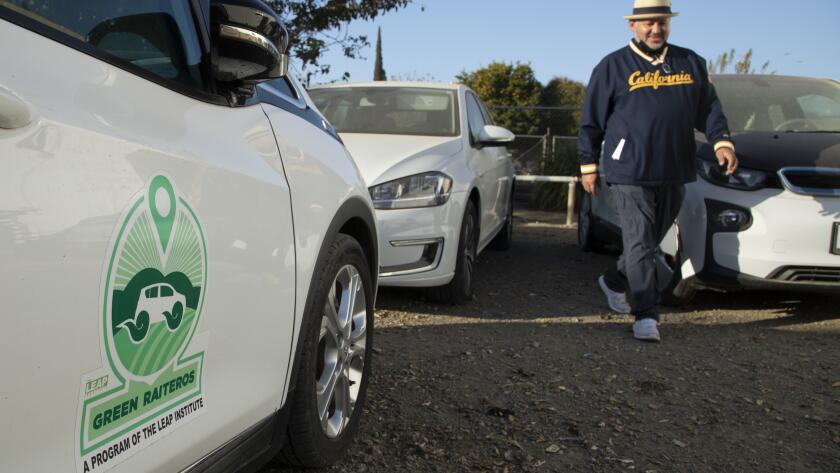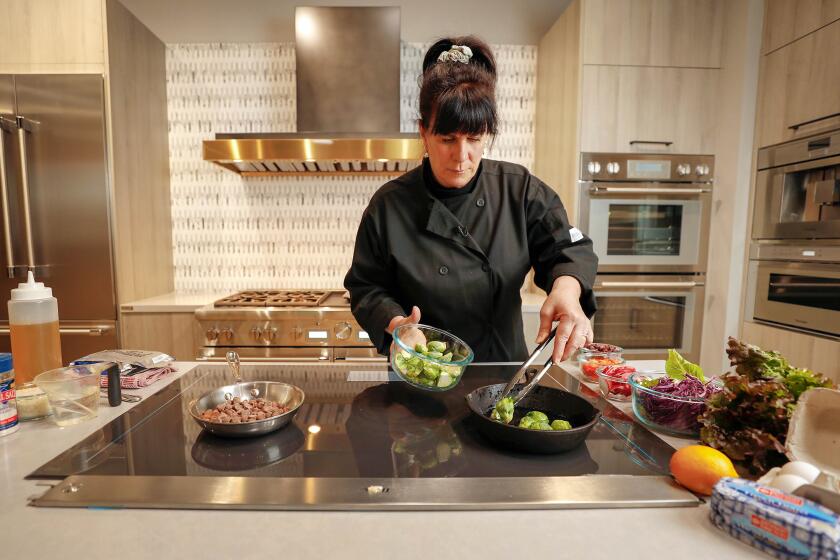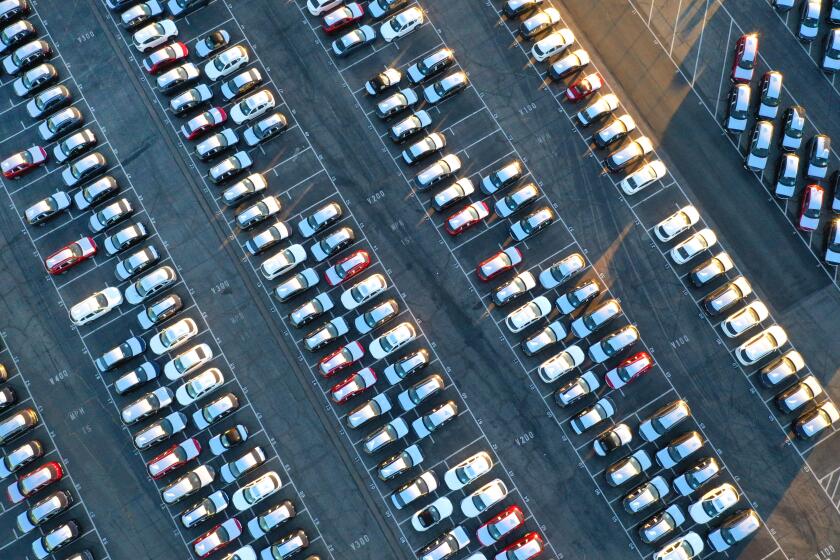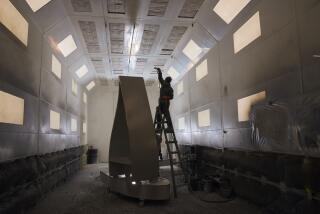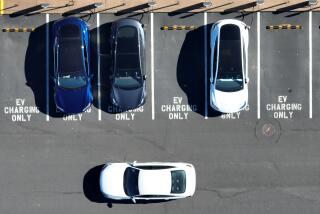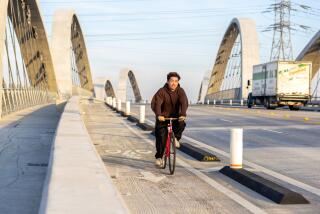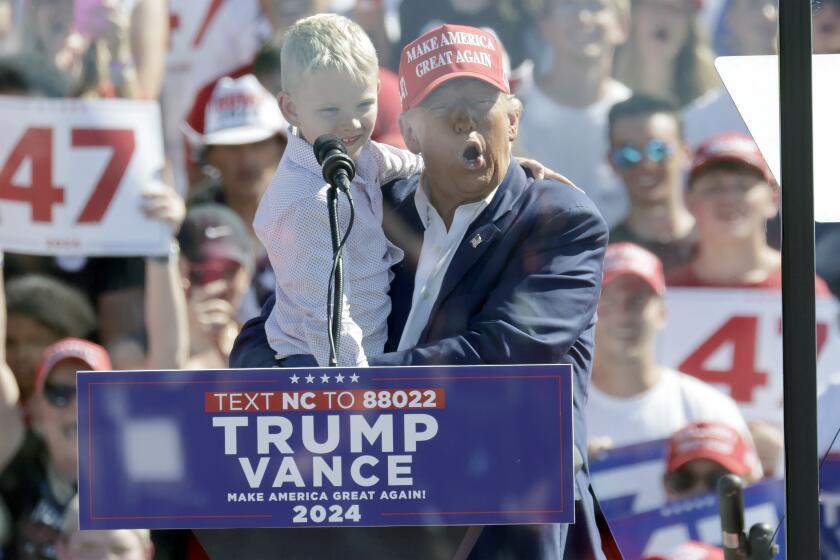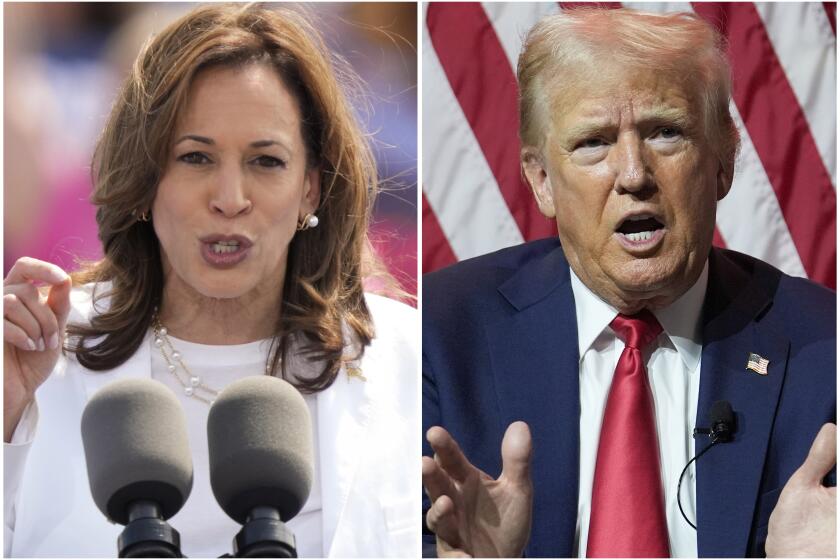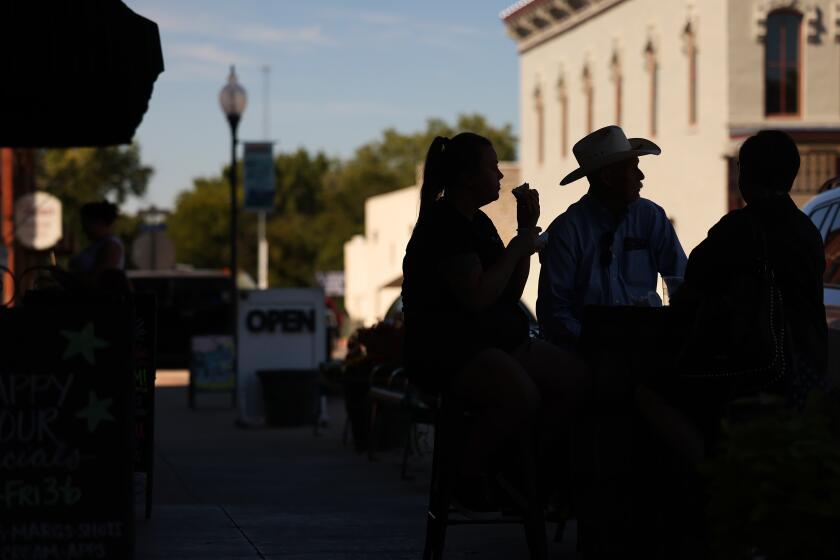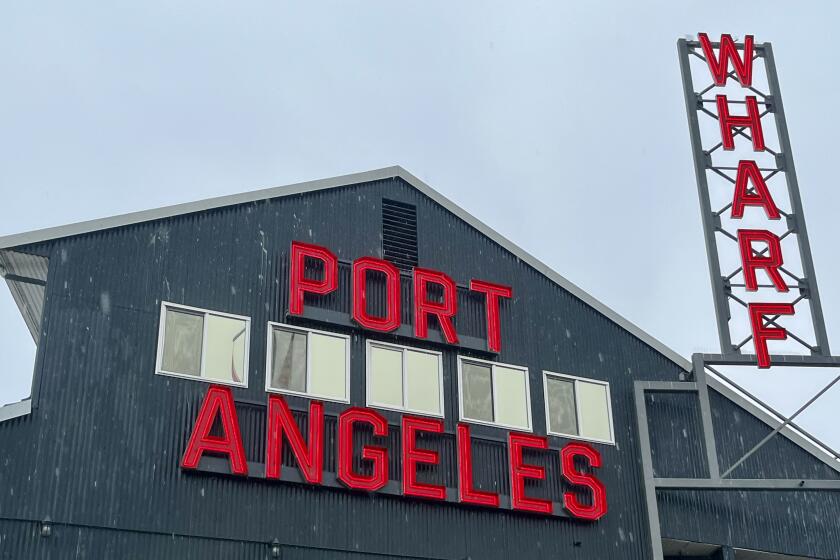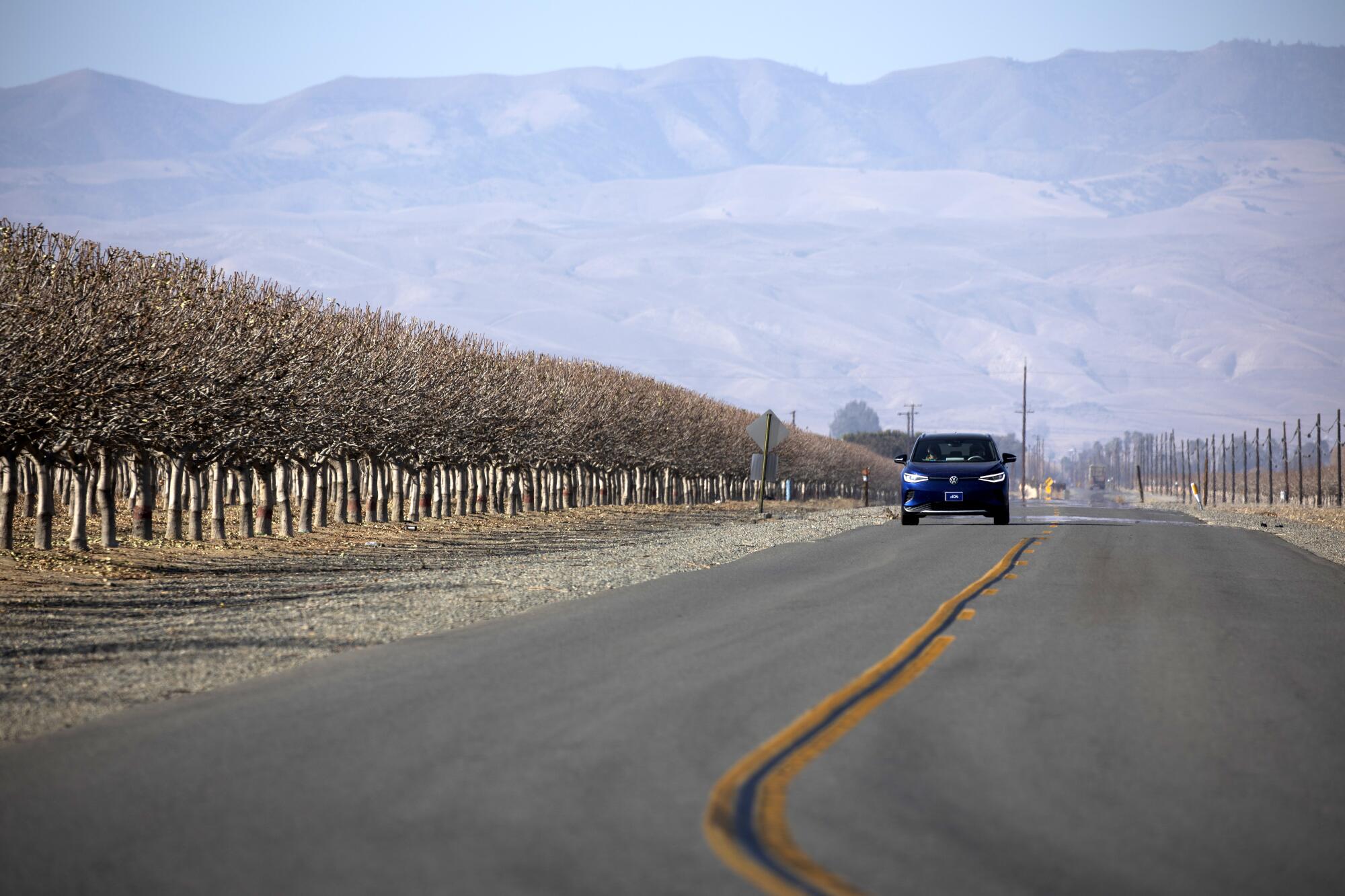
This Central Valley outpost is one of the most fertile places on Earth, attracting thousands of seasonal laborers to harvest lettuce and reaping windfalls for big agribusiness. But for most of Rey León’s life, the city of Huron has been a transportation desert.
When he was a child, it took three hours and 13 stops to ride a bus 53 miles to Fresno to visit a cousin in the hospital. “That experience stuck with me,” he said.
By the time he’d graduated from UC Berkeley and returned to the community to help his aging parents, little had changed. Even after he was elected Huron mayor five years ago, León’s lobbying for reliable bus routes to Fresno, Visalia and Coalinga got nowhere with regional planners, who chafed at the cost.
“It’s always about who do you value and what do you value,” León said. “Farmworker communities have never been valued.”
The mayor took matters into his own hands. And now, as the Biden administration builds its multibillion-dollar blueprint for confronting deep inequities in the transition to green transportation, one of the few places it has to look for inspiration is Huron.
Getting low-income communities to transition to costly electric cars is one of the biggest climate challenges faced by the state and nation. But the rural town of Huron, Calif., and the urban community of Rancho San Pedro show it can be done.
Tucked behind the boarded-up buildings of the town’s struggling main drag is an arsenal of innovation that León calls the Green Raiteros. It has put Huron on the map as perhaps the greenest migrant farmworker community in the country. Headquartered in a former diesel truck garage, the growing fleet of nine electric cars managed by León’s Green Raiteros program shuttles residents all over Fresno County free of charge.
“It’s a Spanglish term,” León said of the word “raitero” and its root, “raite” — slang for “ride.” In the long history of migrant workers seeking and offering lifts, the person who gives or receives the ride, León said, is the raitero.
The Green Raiteros program’s costs are covered mostly with hundreds of thousands of dollars in grants León cobbled together from state climate programs that industrial polluters are required to fund. Passengers are asked to reserve their rides a few days in advance, and they are welcome to use the service as often as they need.
Electric cars, climate credit schemes, diverse boardrooms and legal weed: How California exports its ideas and policies across the U.S.
On an otherwise sleepy Tuesday morning, the Green Raiteros headquarters was abuzz. “I call this one ‘The Executive,’” León said as he showed off an electric Volkswagen ID 4, the fanciest car in the fleet, at least until the three Teslas on order arrive. “There’s a button you can push to give you a massage.”
A crew of locals on the Green Raiteros payroll hopped into the cars along with León and fanned out to pick up clients needing to get to other cities in the valley, mostly for medical appointments. A compact electric Chevy Bolt ferried an elderly resident to Hanford. Another was destined for Visalia. León cruised across town in the ID 4 to pick up 68-year-old Gregory Hernandez, who was once a raitero himself but is unable to drive after having two strokes in July.
As the VW rolled past lettuce fields and pistachio groves on its way to Hernandez’s dialysis appointment in Coalinga, the passenger marveled at the technology.
“Smooth,” Hernandez said in Spanish, gesturing with extended hands to emphasize the point.
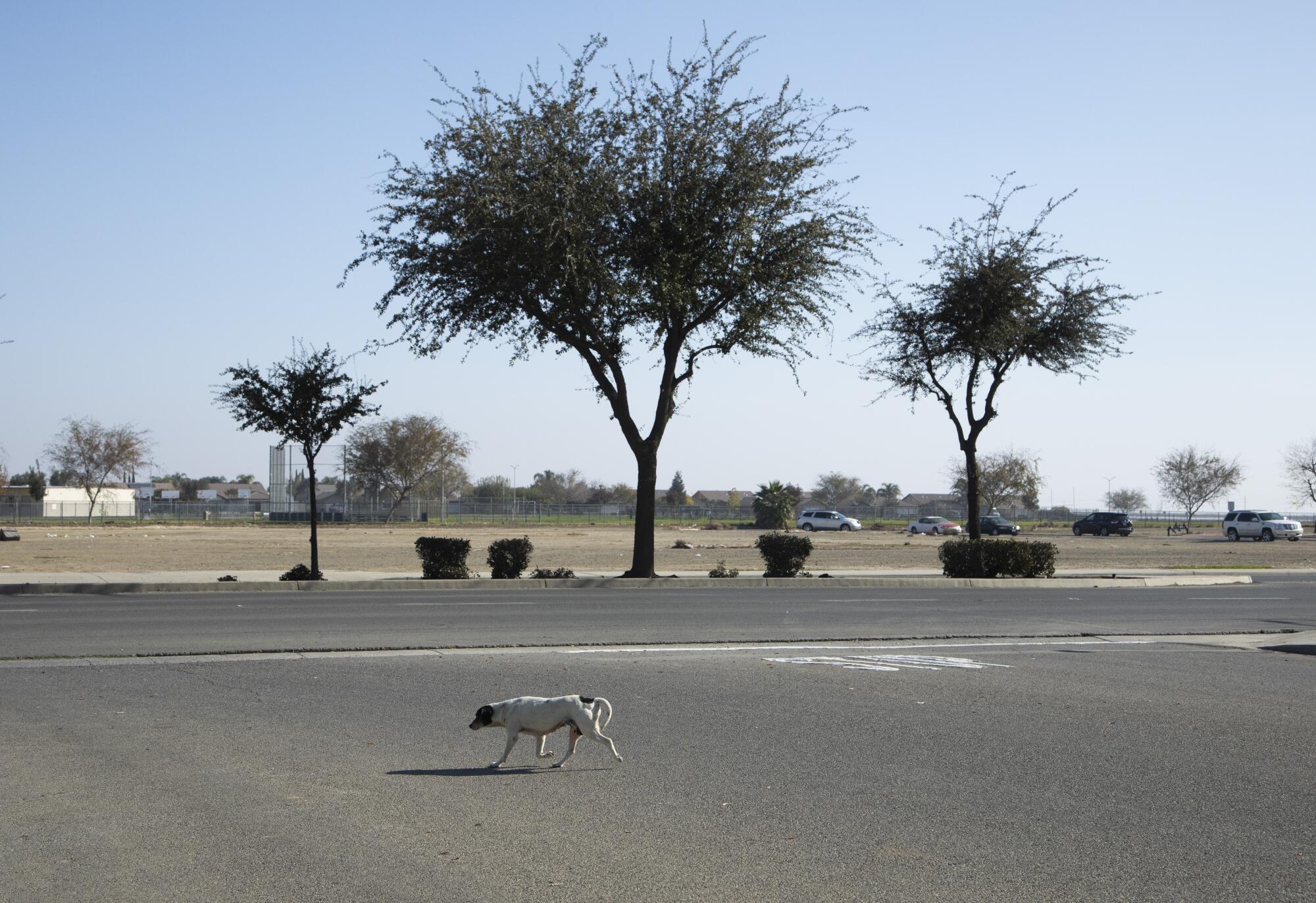
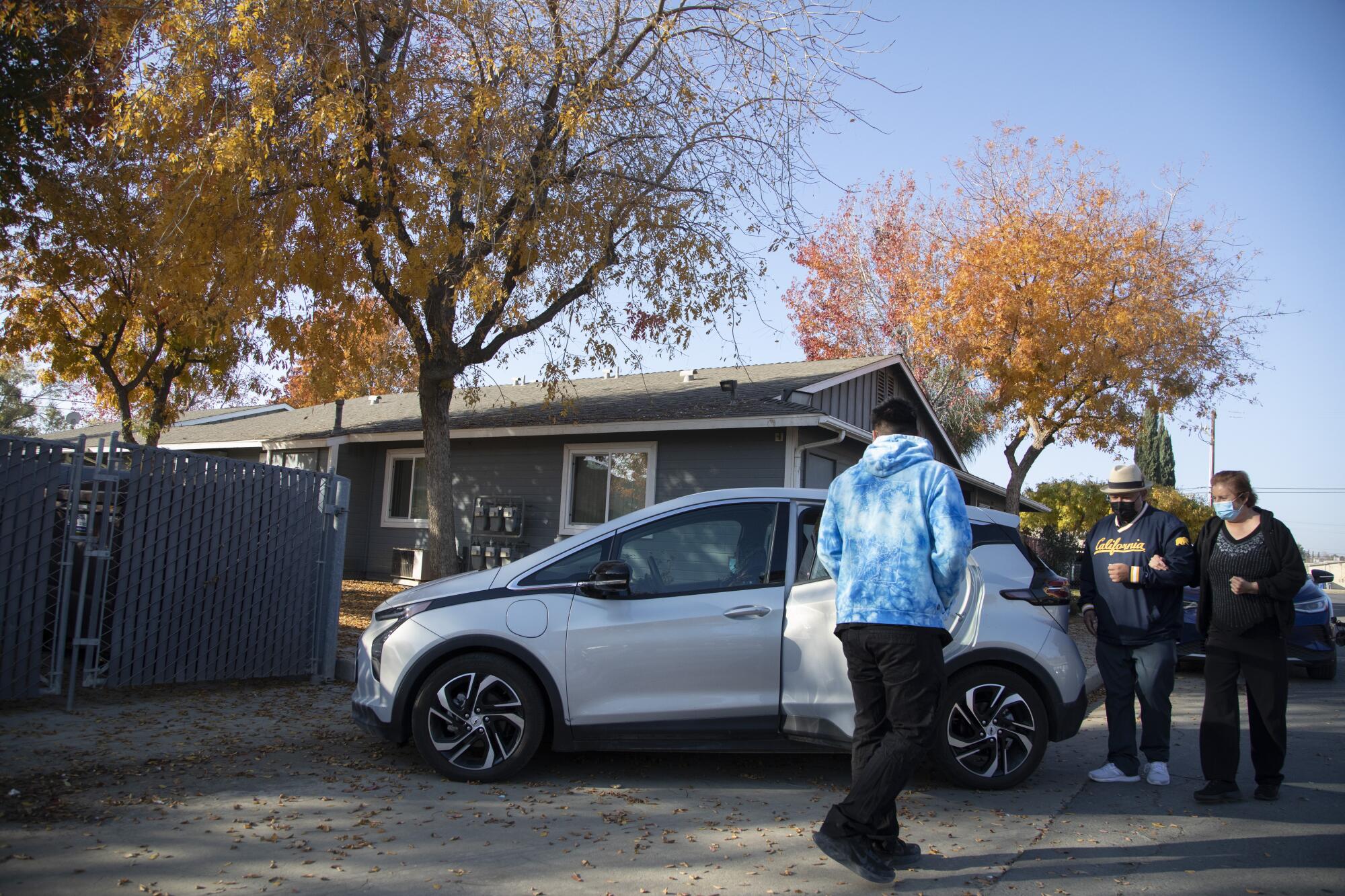
Back in Huron, a Bolt rolled down a residential road that dead-ends into an industrial property, and Maria Guitierrez settled in for her first ride in an electric car. Guitierrez needed to get to chemotherapy, and she was relieved to no longer have to rely on her husband to get her there. “Our husbands work in the fields, and they cannot take a lot of time off,” she said in Spanish. “This is a great service.”
León’s program is driving Huron, population 6,206, toward having as many public charging stations per capita as anywhere in America. There are already 30 ports in town. It is a notable distinction when environmental justice groups are otherwise exasperated by the concentration of electric vehicle infrastructure in the wealthiest ZIP Codes. California officials warn that the state’s climate goals won’t be reached unless zero-emission technology rapidly spreads into lower-income communities.
In a worst-case emissions scenario, half of the valley’s eight counties will have average annual maximum temperatures over 80 degrees by 2100.
León’s vision for turning this out-of-the-way city with a median household income of $25,000 into a showcase of electric vehicle innovation is built around the area’s needs and financial constraints. It is a turnabout from most electric vehicle programs, whose incentives focus on car ownership — accessible only to drivers who can afford a Tesla or Bolt and have a garage to equip with a charging station.
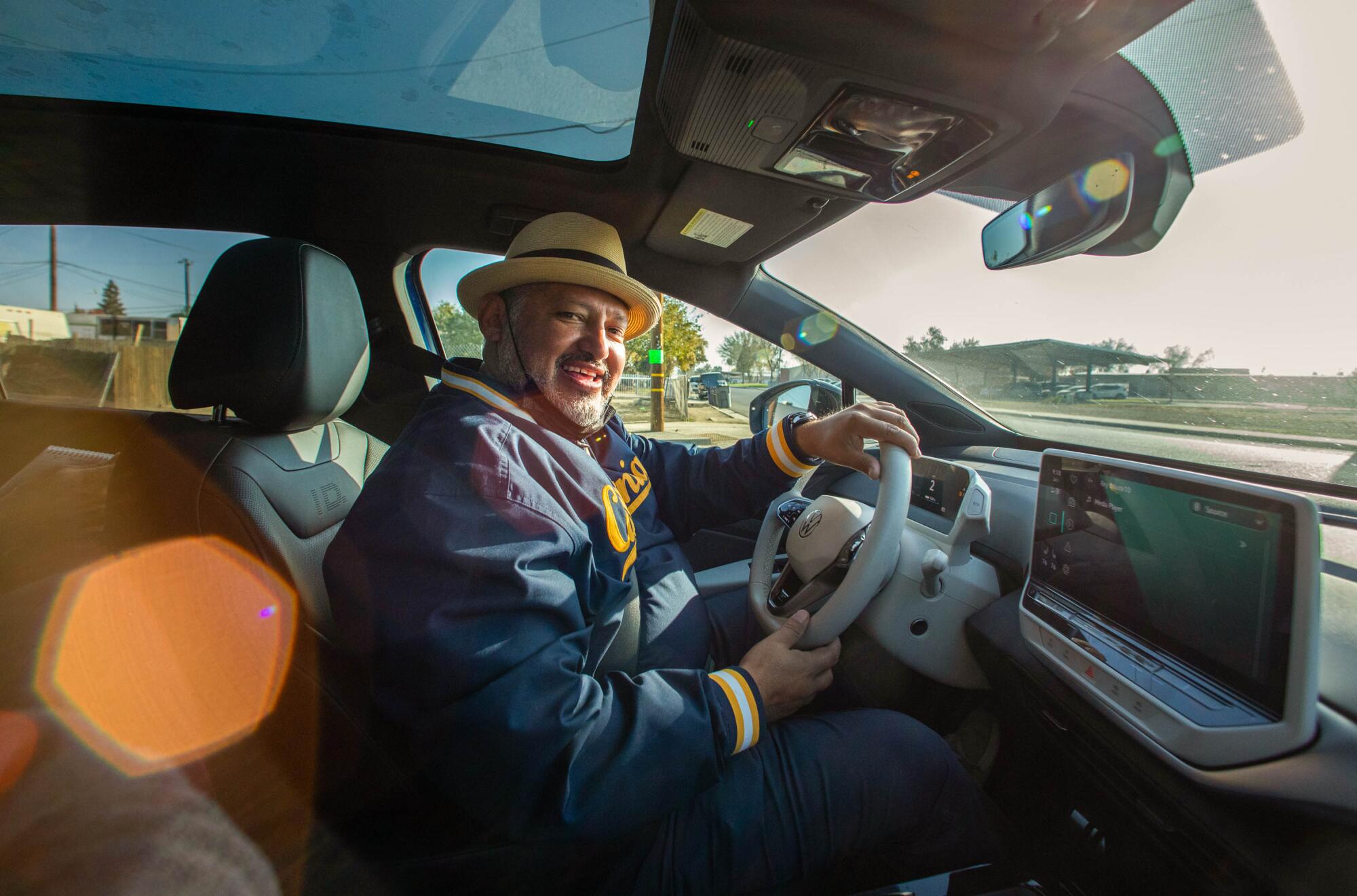
Huron, said Alvaro Sanchez, vice president of policy at the Oakland-based Greenlining Institute, is “revolutionizing the way that we should think about planning for transportation and deploying transportation.”
That wasn’t necessarily León’s plan. He was just trying to solve a vexing transportation puzzle that plagues so many communities like his. León seized on an informal raitero ride-sharing economy that thrived in farmworker communities long before Uber was even a thing.
“Raiteros precede Uber by decades,” León said. “If raiteros would have had the social media and technology skills, then it would have been raiteros not Uber” that brought ride sharing into the mainstream.
California sparked a national push to ban gas lines into homes. Its success hinges on persuading home cooks the gas stove is obsolete.
There are only a handful of places nationwide that have even tried to integrate electric vehicles into low-income communities, and most are in California.
Los Angeles, San Francisco and other big cities are experimenting with programs in underserved urban areas, often involving car sharing at subsidized housing complexes. Scaling them up is an urgent mission for the Biden administration, which vows to prioritize environmental justice as it aims to quadruple the nation’s network of fewer than 113,000 public charging ports to at least 500,000 by 2030.
“There aren’t a lot of models that are easily turned to,” said Matt Petersen, president of Los Angeles Cleantech Incubator, a nonprofit helping the region meet its green transportation goals. California cities, Petersen said, offer the most obvious template.
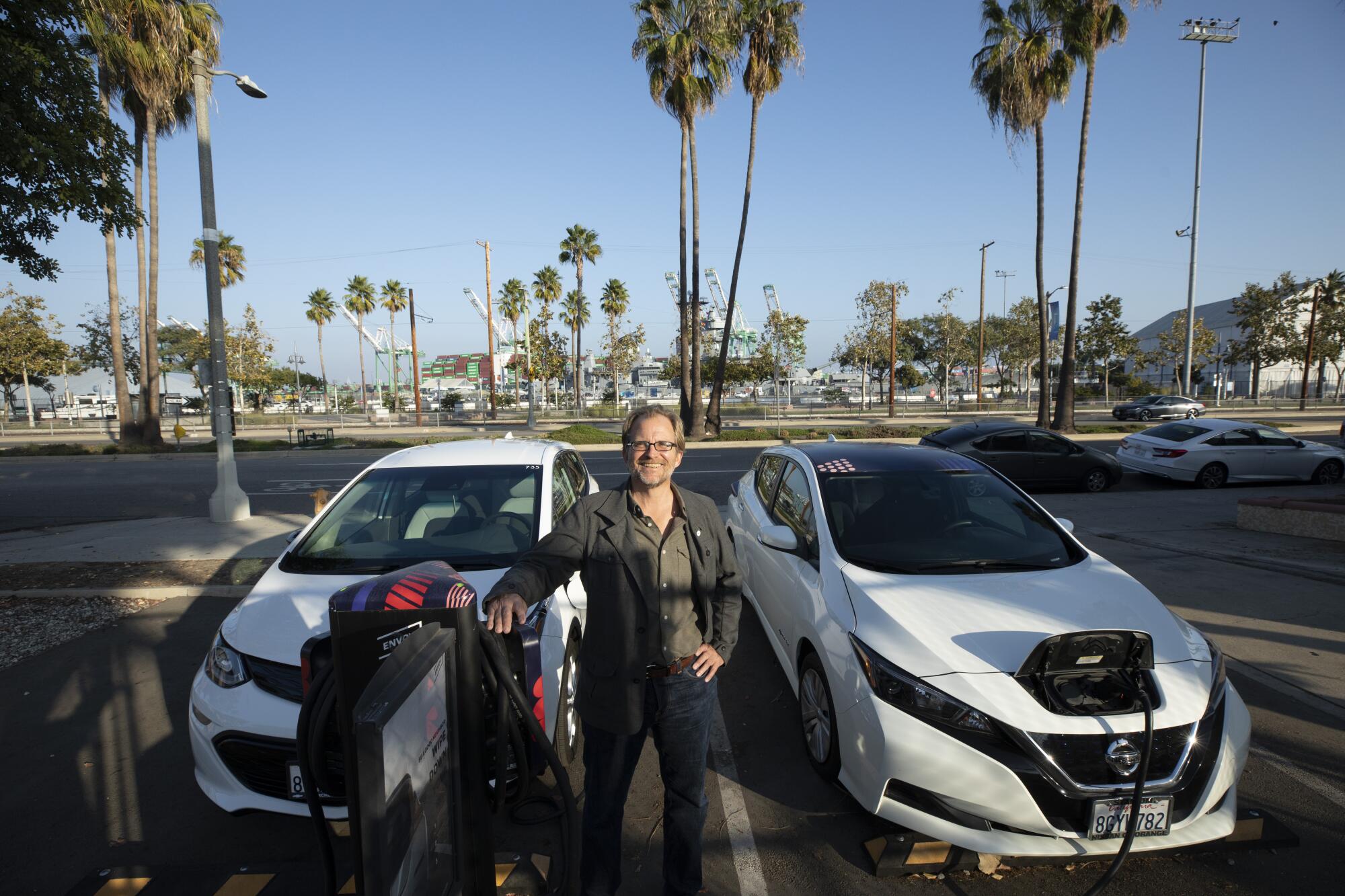
Petersen was standing alongside two electric cars that are used heavily by residents in Rancho San Pedro, a community of 450 subsidized apartments that borders the Port of Los Angeles. It is one of the most polluted neighborhoods in Southern California.
Nearly 40 drivers in the community have enrolled in a program that allows them to rent the compact cars for $3 an hour. Rep. Nanette Barragán, a Democrat from San Pedro, is working on legislation to push the federal government to launch such programs in low-income communities nationwide.
“They say that in the future all cars will be electric,” said Rancho San Pedro resident Carmen Rivera, who uses the cars to get her children to medical appointments. “This is a way to keep up to date and think about the fact that one day we’ll be using this kind of car.”
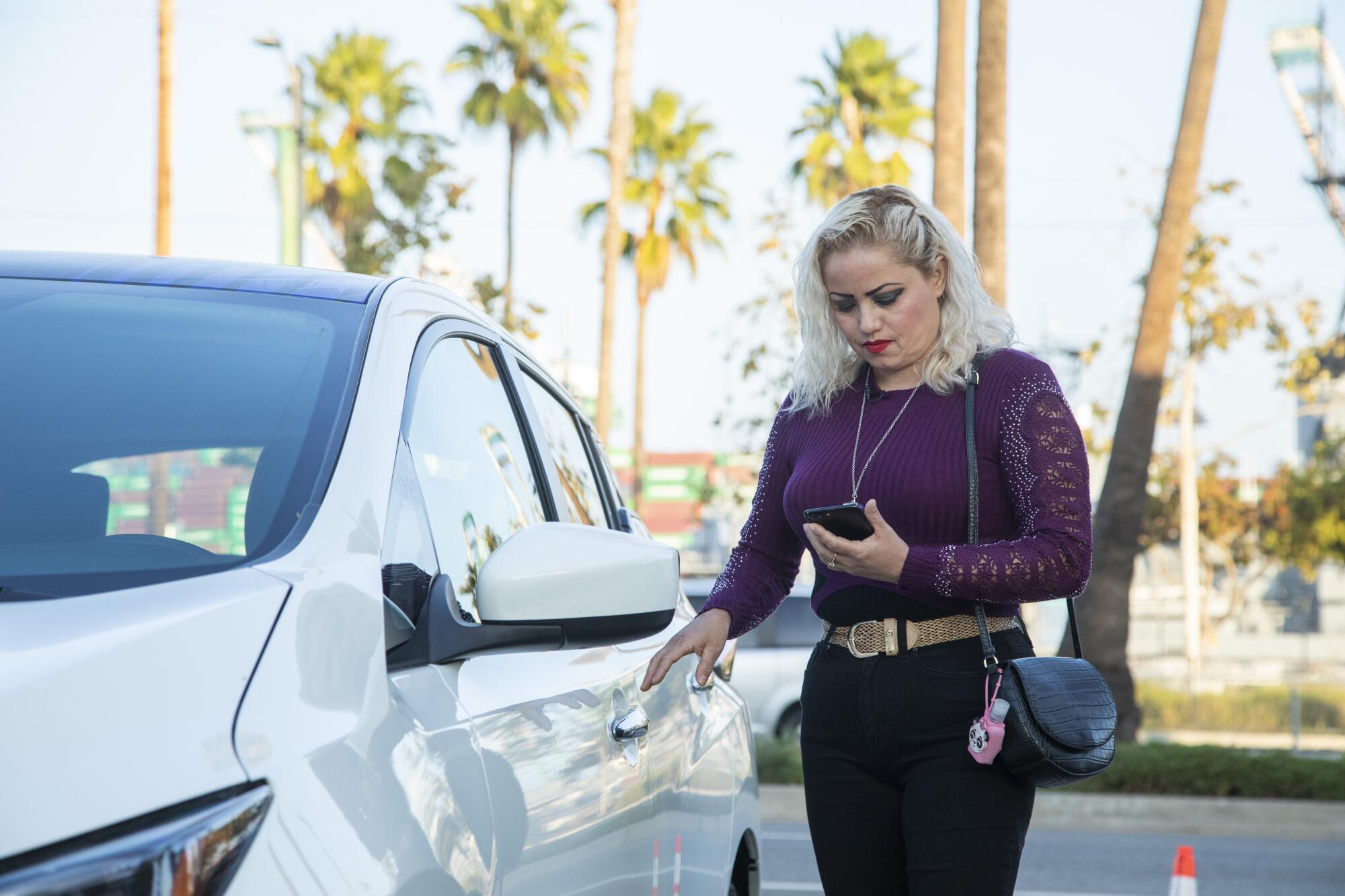
The enthusiasm delights transportation advocates struggling to introduce zero-emission vehicles into communities where they are often viewed as underpowered, unreliable and unfun. Sanchez even plans to go on tour with the San Diego Lowrider Council with an electric model it is developing, in hopes of breaking down those barriers.
Getting these cars into lower-income communities was designated by the UCLA Luskin Center for Innovation as “the greatest challenge we now face in meeting our climate goals.”
In the name of climate action, California pushed the world toward electric cars. But building enough of them is creating its own environmental crises.
The places in the state with the worst air quality problems, which are often caused by vehicle pollution, have the least access to electric cars. Fewer than 6% of the zero-emission vehicles registered in the state as of 2019 were in the top fifth most polluted and economically disadvantaged communities, according to the center.
It is a point critics of the state’s green energy policies have pounced on.
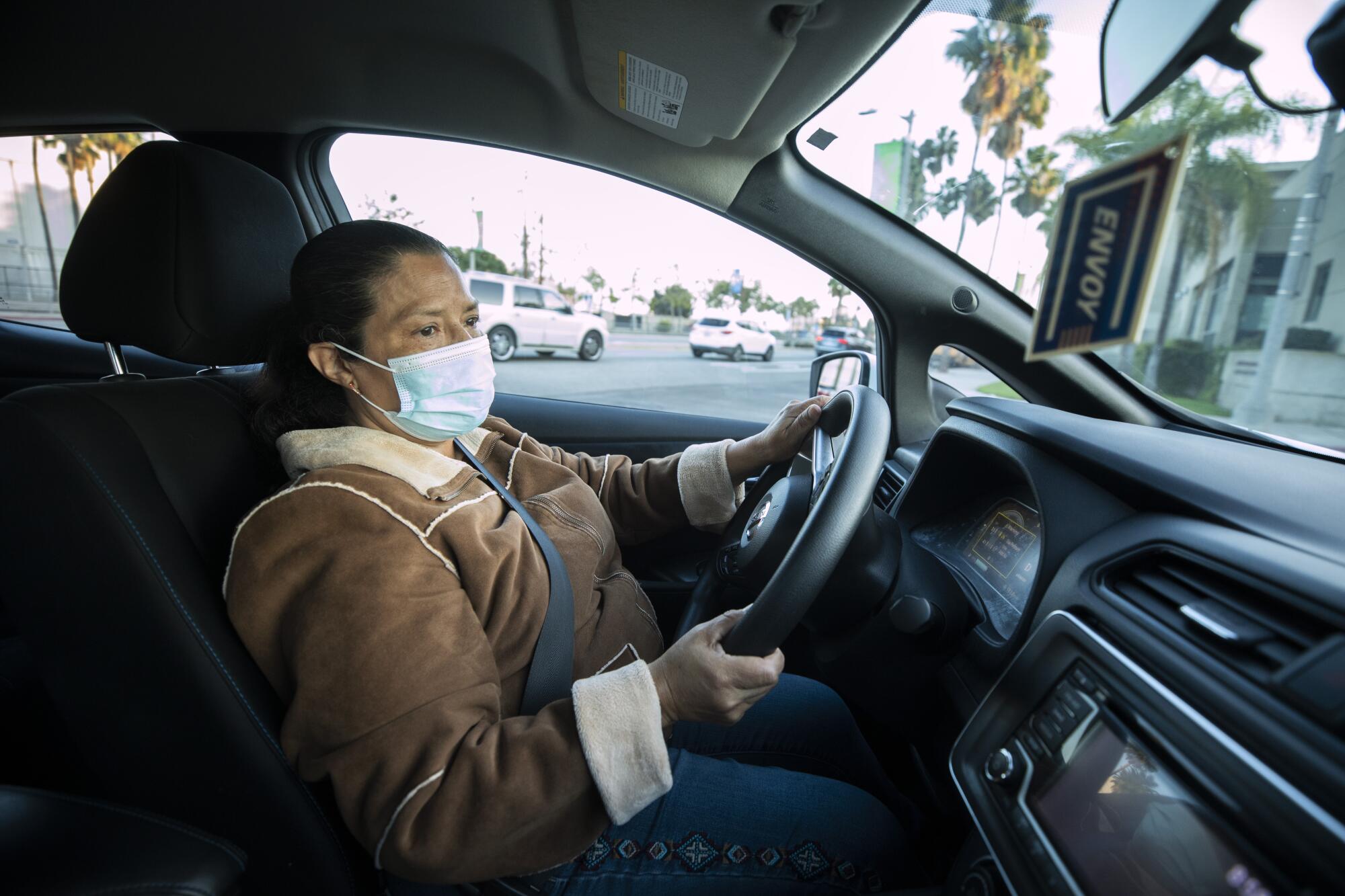
“How will my constituents afford an EV?” Assemblyman Jim Cooper, a Sacramento-area Democrat, tweeted when Gov. Gavin Newsom signed an executive order banning the sale of new gas-powered cars and SUVs after 2035.
“They can’t,” Cooper wrote, noting the cars displayed at the signing ceremony each cost more than $50,000. “They currently drive 11-year-old vehicles.”
León knows all about it, having grown up on the margins. His father arrived in the Central Valley in 1951 through the bracero program, which allowed Mexican migrants to fill a labor shortage in American fields. The wages were meager. León’s father would do irrigation work in the fields by day and run a bar patronized by fellow farmworkers at night.
“He was a slave,” León said. “He was still a slave at the bar, but at least he was his own master.”
León was determined to not let his small city be left behind in the electric car revolution, as it has been left behind in so many things. Where others saw in electric car subsidies another giveaway for coastal elites, León saw opportunity for what he calls this “geographically and linguistically isolated” community.
“We’ve been able to provide a great deal of services for the farmworkers, the hardest workers on the planet,” he said.
No state has had a bigger impact on the direction of the United States than California, a prolific incubator and exporter of outside-the-box policies and ideas. This series of occasional articles examines what that has meant for the state and the country, and how far Washington is willing to go to spread California’s agenda as the state’s own struggles threaten its standing as the nation’s think tank.
There is no denying the Green Raiteros program has made life easier for them and their families. That was clear at Silver Birch Apartments, a modest collection of low-rise units for seniors, where one of León’s raiteros rolled in to pick up Anna Maria Solorio, an 87-year-old who needs to get to doctors in Fresno and Hanford twice weekly.
“We rely on this program a lot,” said Solorio’s daughter, Margarita Lopez, who does not own a car. Without it, Lopez said, “we don’t have a way to take her, or money to take her.”
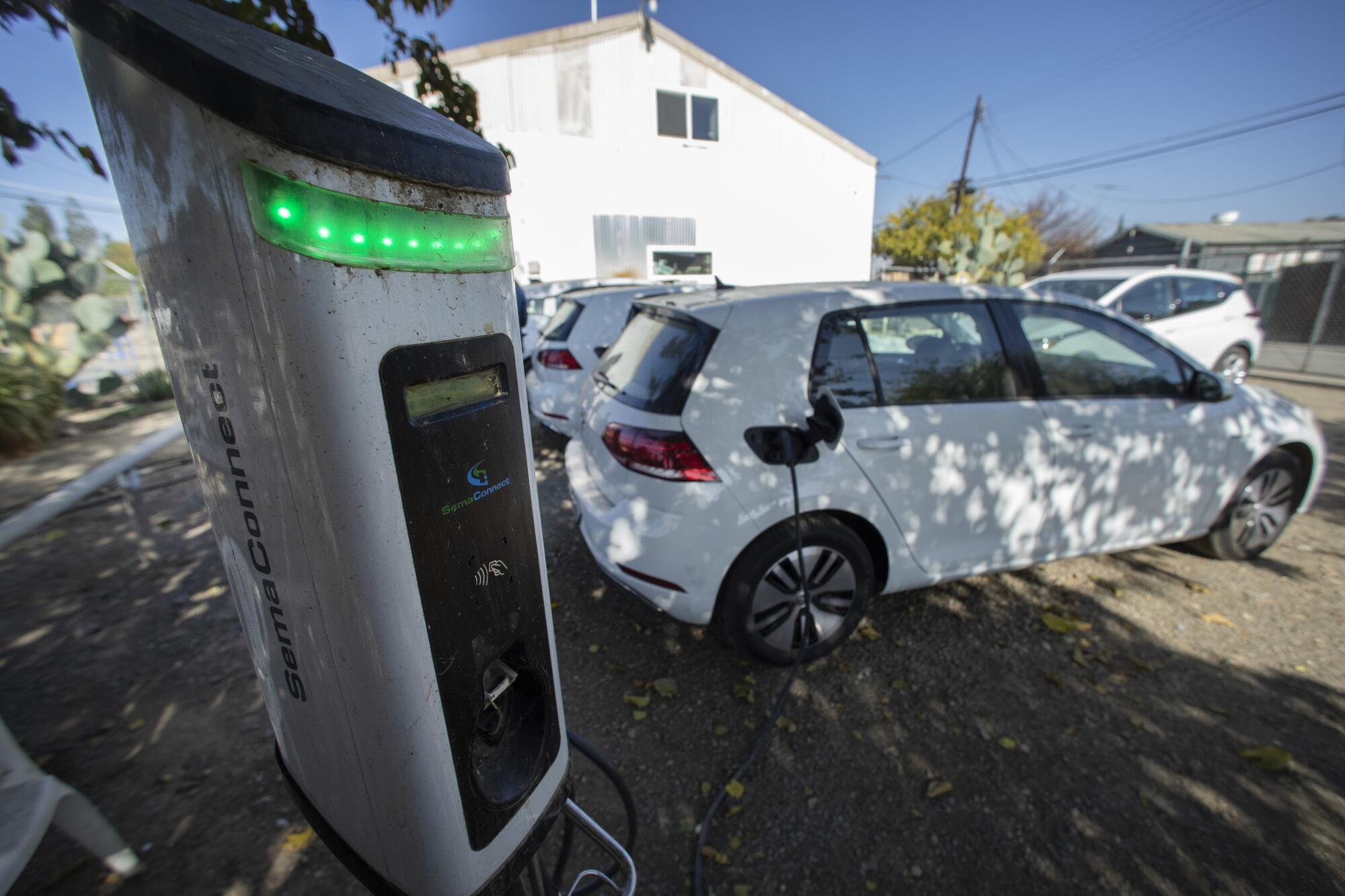
Whether ventures such as the Green Raiteros can be exported throughout the state and the nation is not so much a question of dollars. Billions are available through the infrastructure package Congress recently passed, state climate action funds have created another pot of money, and the cost of electric vehicles is rapidly dropping.
The bigger question is whether there are enough Rey Leóns.
Electric cars are enthusiastically embraced in both Huron and San Pedro because community leaders had a vision for how they could be used, residents were recruited to help them carry it out, and outside bureaucrats are making a point of interfering as little as possible.
“Transportation is usually a top-down process where a model is deployed onto a community, hoping that that community adopts it,” Sanchez said. “This did the flip side. It comes from the community.”
More to Read
Get the L.A. Times Politics newsletter
Deeply reported insights into legislation, politics and policy from Sacramento, Washington and beyond. In your inbox three times per week.
You may occasionally receive promotional content from the Los Angeles Times.
